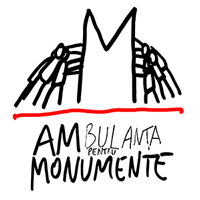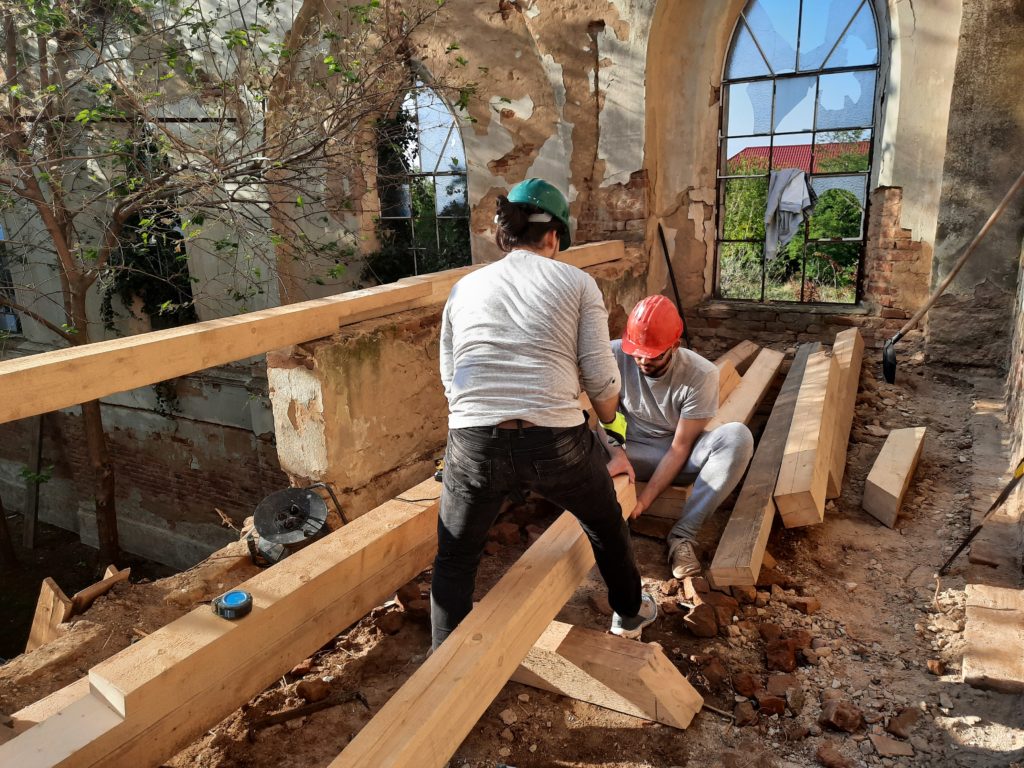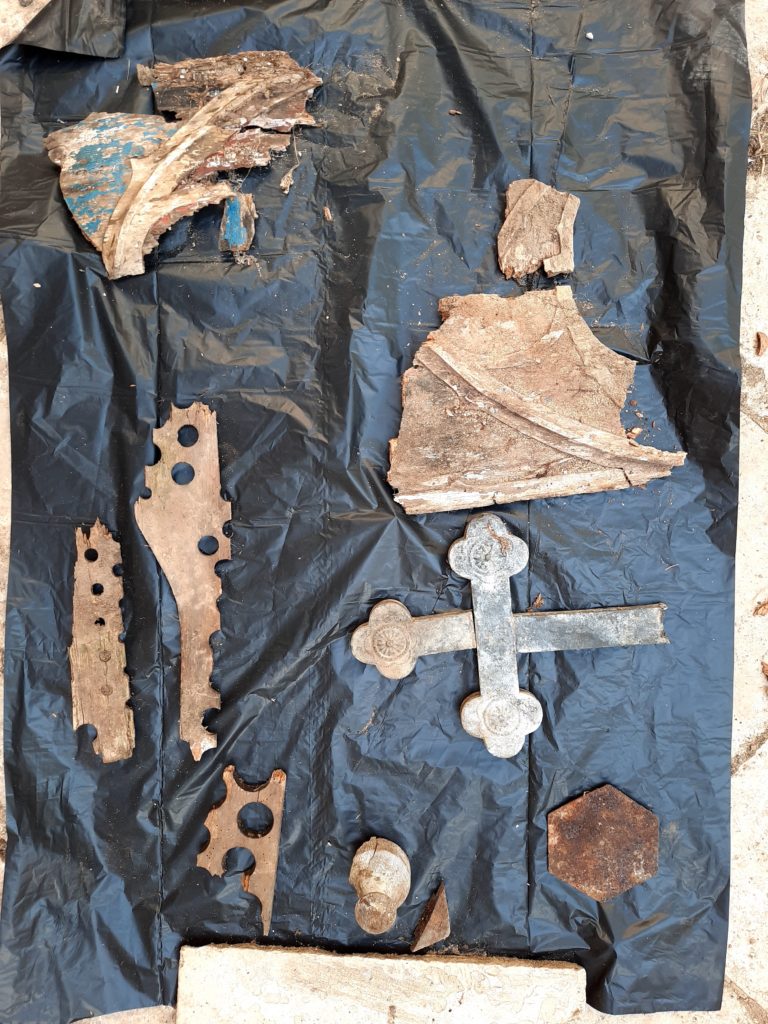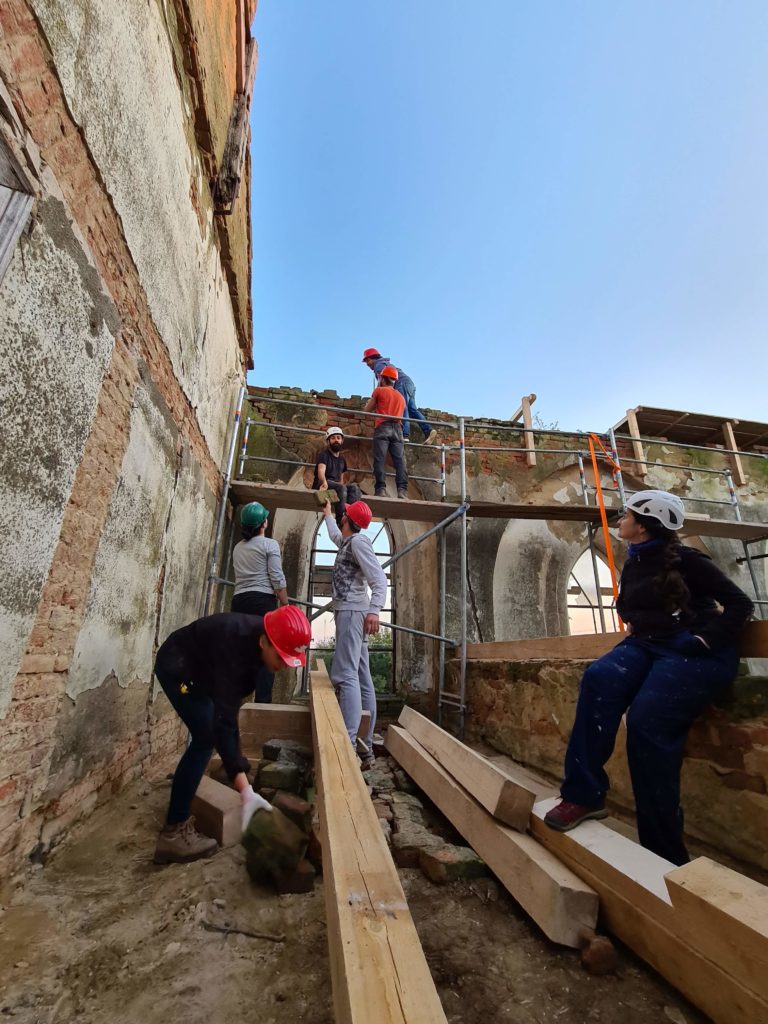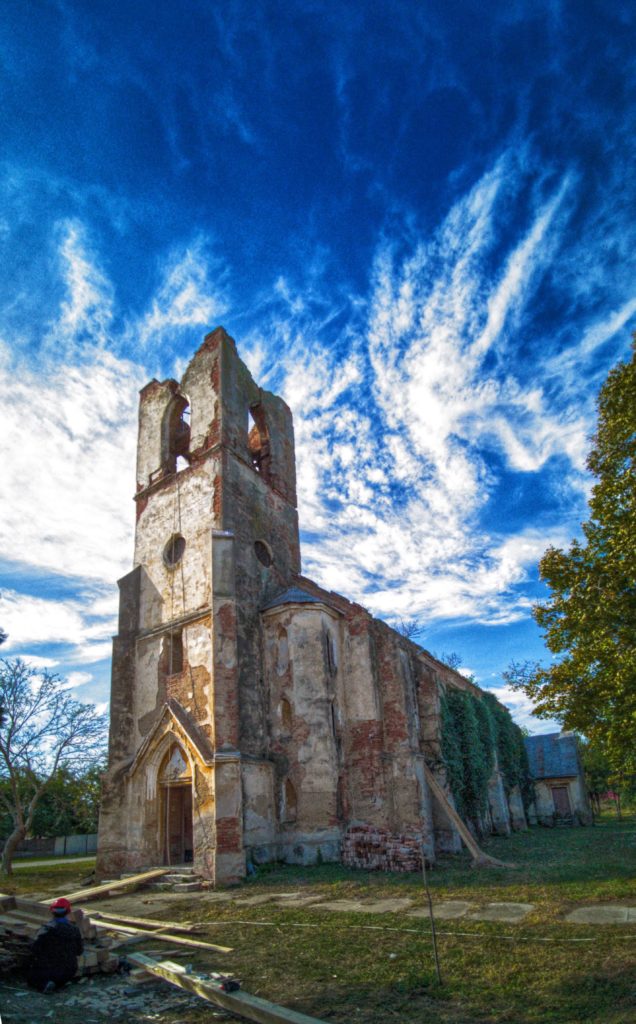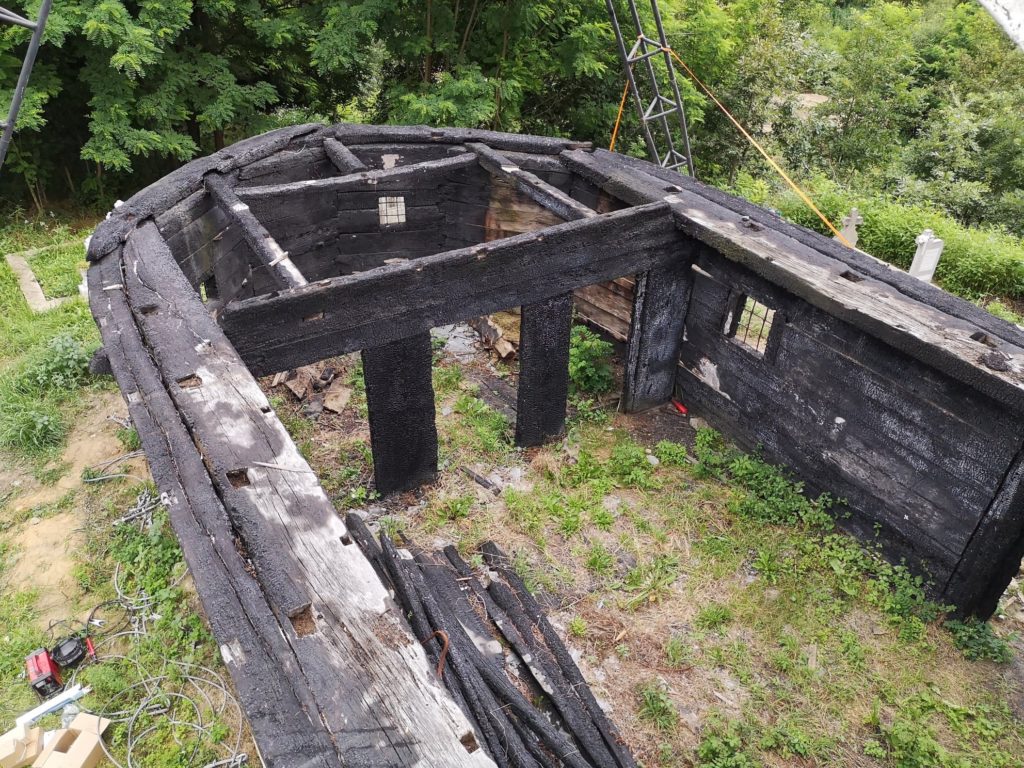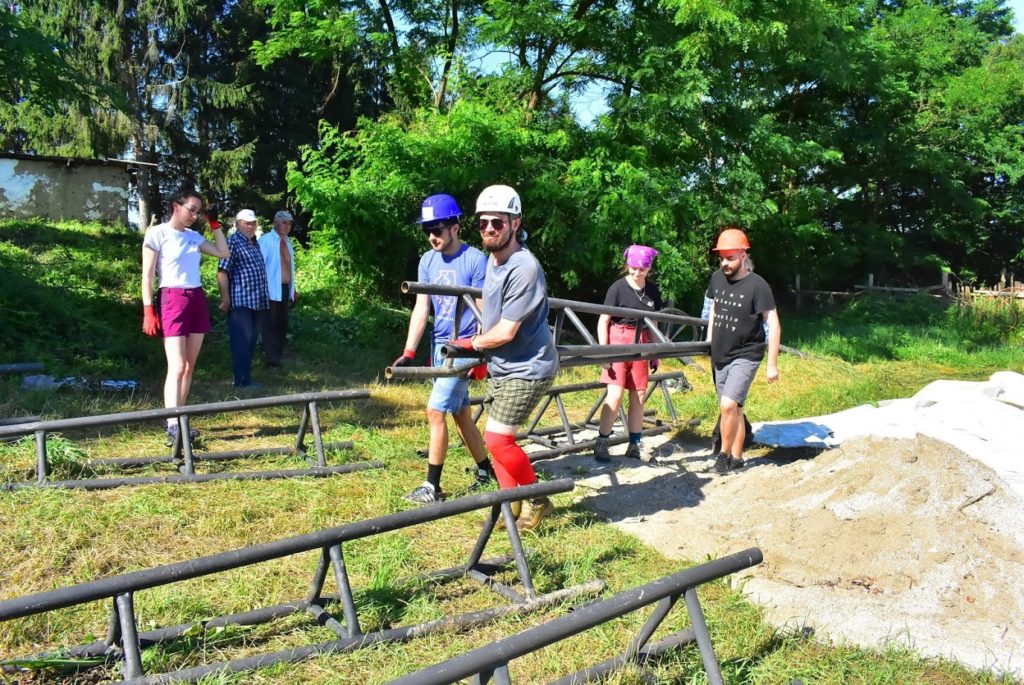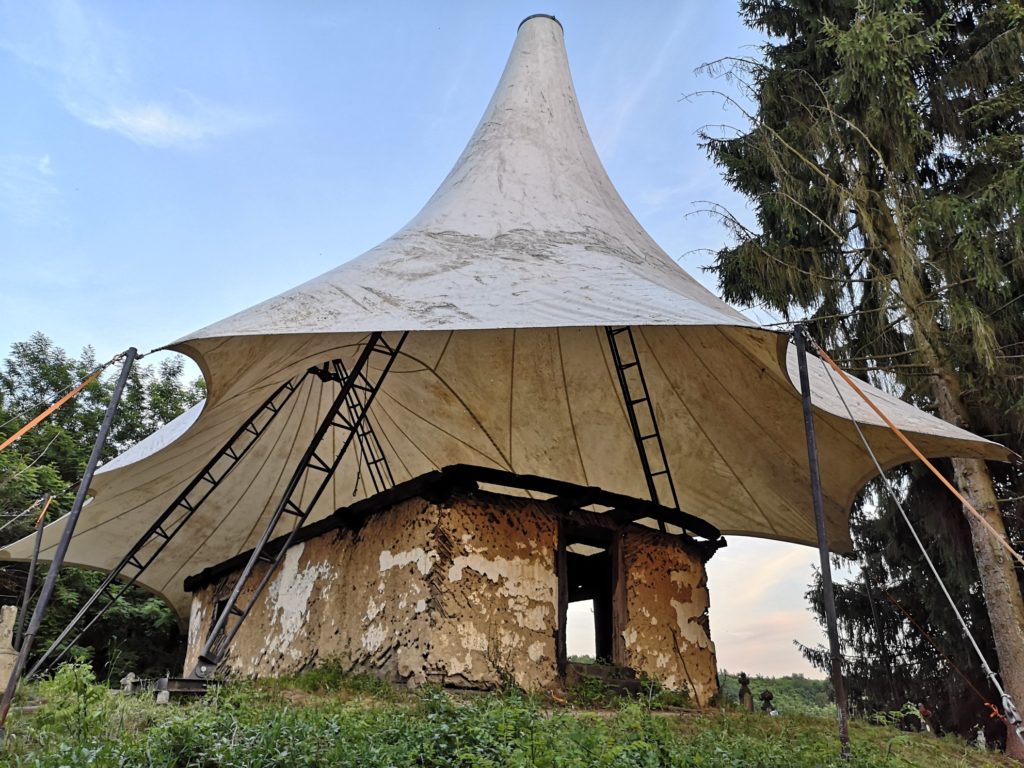Category: Timiș
Banloc, Guard Tower
GENERAL PRESENTATION The Castle of Banloc is one of the most representative castles from the Plain of Banat. What is less known is that alongside the castle and the park, along its property, there are many other modest edifices, which are abandoned, covered by vegetation, having been vandalized many times throughout their history. The Guard […]
Veronica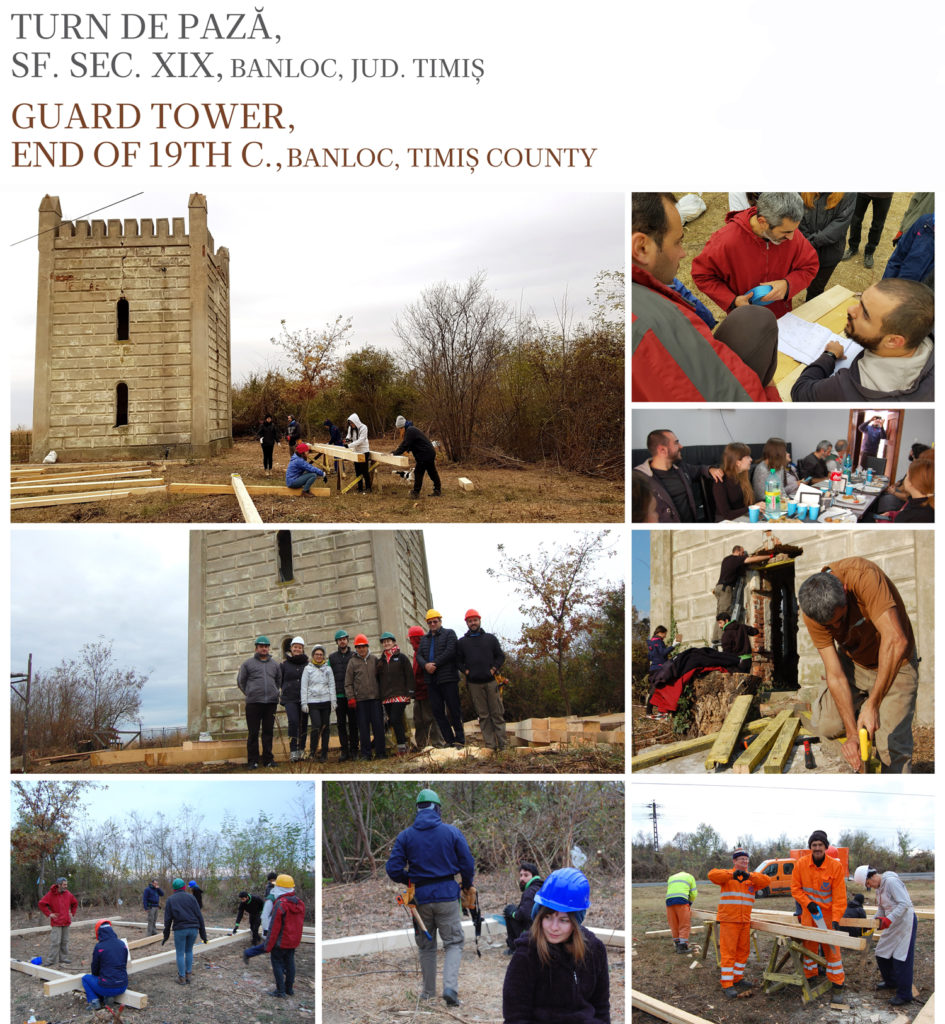
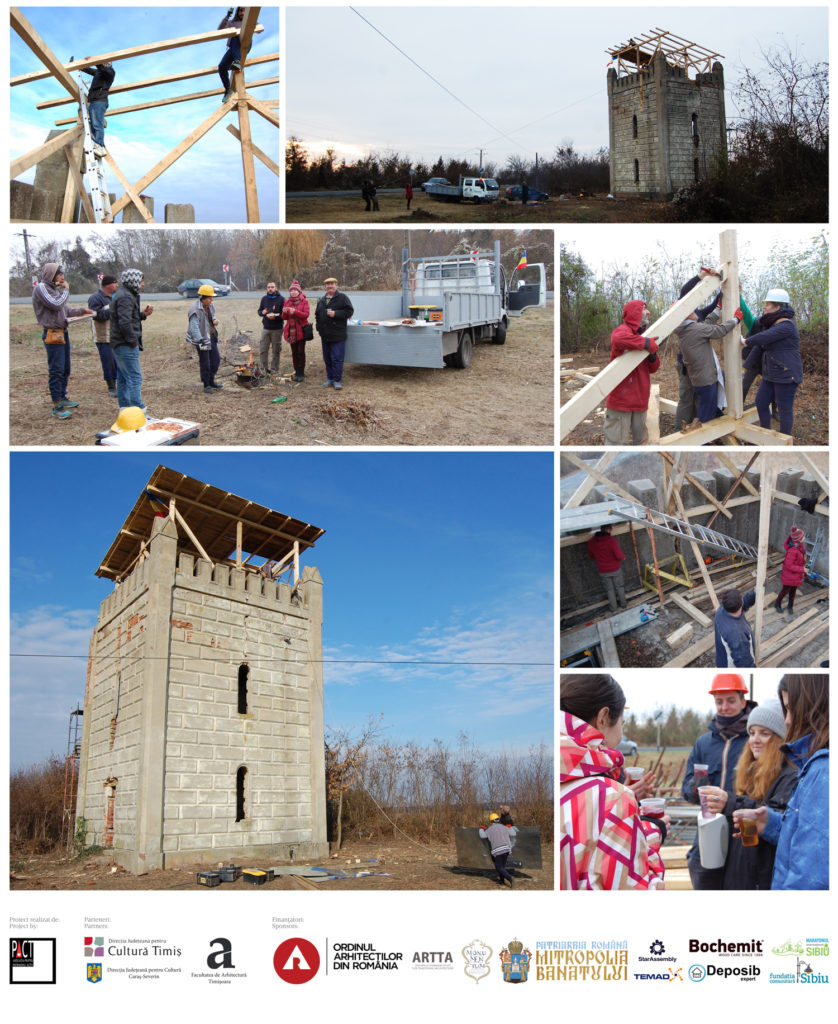
GENERAL PRESENTATION
The Castle of Banloc is one of the most representative castles from the Plain of Banat. What is less known is that alongside the castle and the park, along its property, there are many other modest edifices, which are abandoned, covered by vegetation, having been vandalized many times throughout their history.
The Guard Tower or The Banlocculă, as the locals call it, in the immediate vicinity of the DN 59B road, between Deta and Banloc, abutting the once-extended property of the Karacsonyi family, to which the palace belonged until the beginning of the 20th century. It is an eclectic-romantic construction of the late 19th century, abandoned for over 70 years and damaged by the earthquake of 1991.
THE STATE BEFORE THE INTERVENTION
The culă presents cracks on the entire section, indicating earthquake damage dating back to 1991; the wooden floor and the entryway staircase have disappeared. The terrace roofing is heavily degraded, allowing rainwater infiltrations. In the crack caused by the earthquake, the two outgrown shrubs, through their roots, have significantly accentuated the opening. Whole portions of the crenel and merlon have fallen.
ACCOMPLISHED INTERVENTIONS
A wooden structure was built to support the crenel and merlon area and to protect the culă from rainwater damage. To prevent the further opening up of vertical cracks, 5 metal tie rods will be added to stabilize them. This emergency shelter has the role of prolonging the life of the tower until the authorities find the financial resources to restore and refunctionalise it.
Crivina de Sus, Wooden Church
GENERAL PRESENTATION The wooden church in Crivina de Sus with the dedication “Cuvioasa Paraschiva” is the oldest such church in the area, the oral tradition as well as a Cyrillic inscription on the southern portal are marking the year 1676 as the year of its erection. The dendrochronological inverstigation taken in the summer of 2016 […]
Veronica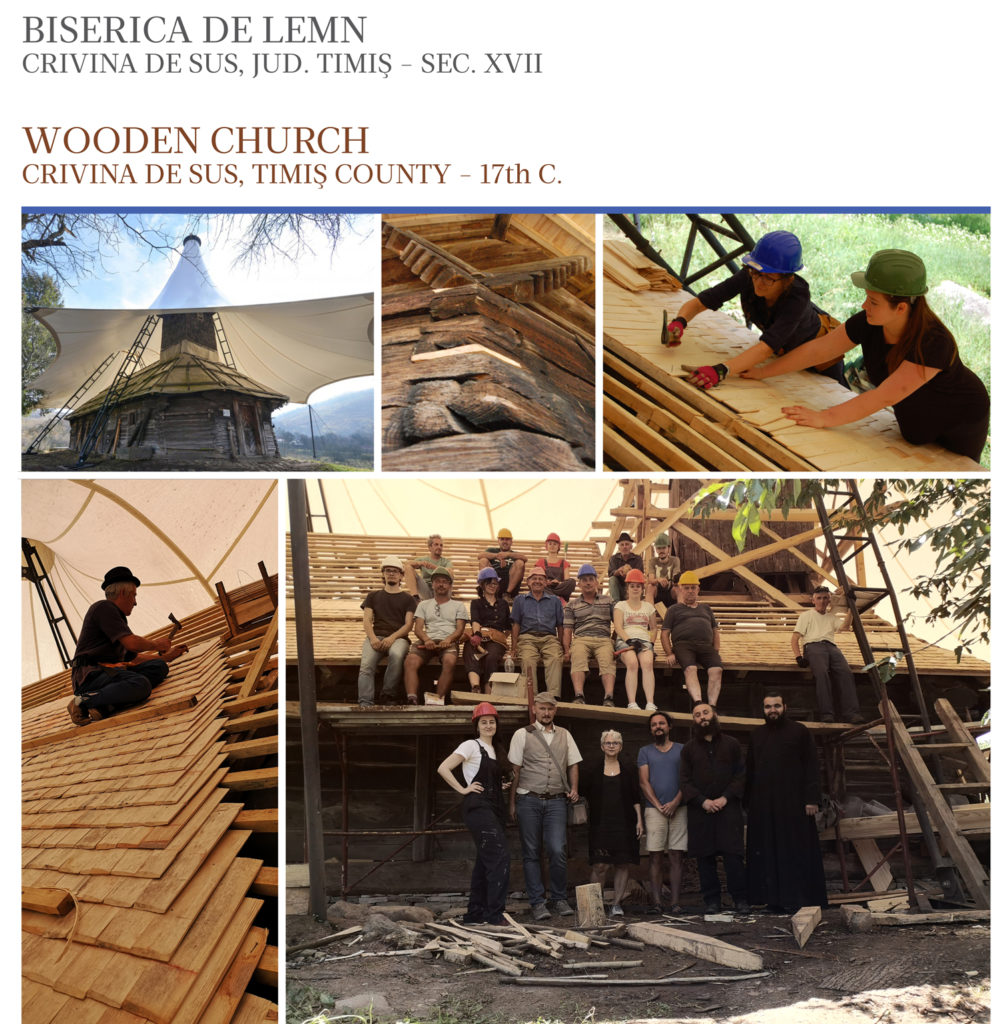

GENERAL PRESENTATION
The wooden church in Crivina de Sus with the dedication “Cuvioasa Paraschiva” is the oldest such church in the area, the oral tradition as well as a
Cyrillic inscription on the southern portal are marking the year 1676 as the year of its erection. The dendrochronological inverstigation taken in the
summer of 2016 confirm its age. The wooden church in Crivina de Sus is the center of a multidisciplinary project (Wooden Churches in Banat), which
has been running since 2013 at the initiative of the Romanian Landscape Association, the Western Territorial Branch, and it is conceived as a sum of
interdisciplinary workshops on architecture and urbanism, landscape, restoration of painting and stone, anthropology and cultural studies. Between
2013-2017 the church survey (laser scanning and photogrammetry) and a series of studies (geological study, dendrochronological study, analysis of
plaster composition, archaeological surveys, historical study, etc.) were carried out. In 2018, the oak was cut and carved for the soles and then the
church was erected to replace the degraded soles, as well as the restoration of the stone foundation “a secco“. In 2019, plumbing, continuation and
replacement of some structural elements in the tower and roof framing were carried out. Subsequently, the interior of the church was plastered with
earth-based plaster.
THE STATE BEFORE THE INTERVENTION
The shingle cover had been degraded for many years, the church was covered with a foamy foil through which the meteoric water penetrated when
the involvement of volunteers began. In 2013 the roof was additionally covered with a ventilated waterproof cloth.
In 2015, within the project is was managed to install a temporary protective roof, made of a tensioned membrane, a roof that allows the carrying out of
research and restoration actions.
SAFETY INTERVENTION PROPOSAL
It was proposed to secure the church by restoring the sheathing. The new shingle is 43 centimeters long and the width between 8 and 12 cm with the
straight finish. The existing degraded laths were undersized, so they were replaced with some suitable of 4×5 cm.
ACCOMPLISHED INTERVENTIONS
The actual intervention consisted in the dismantling and installation of a new shingle roofing, respecting the layout, the size, the material and the
manufacturing technique of the previous one.
Jupânești, „Cuvioasa Paraschiva” Church
GENERAL PRESENTATION The local tradition and some stylistic arguments point towards a dating of the church sometime in the second half of the 17th c. or in the first half of the following one. The building is simple – a single rectangular space for the naos, with a polygonal apse to the east and a […]
Veronica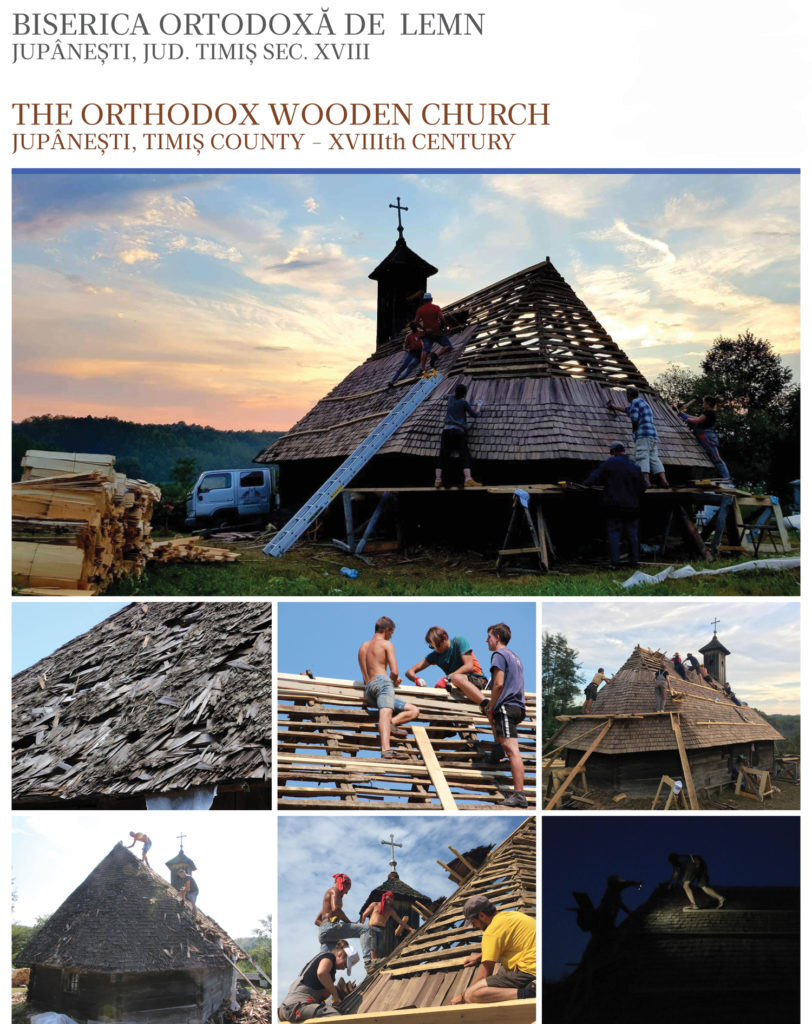
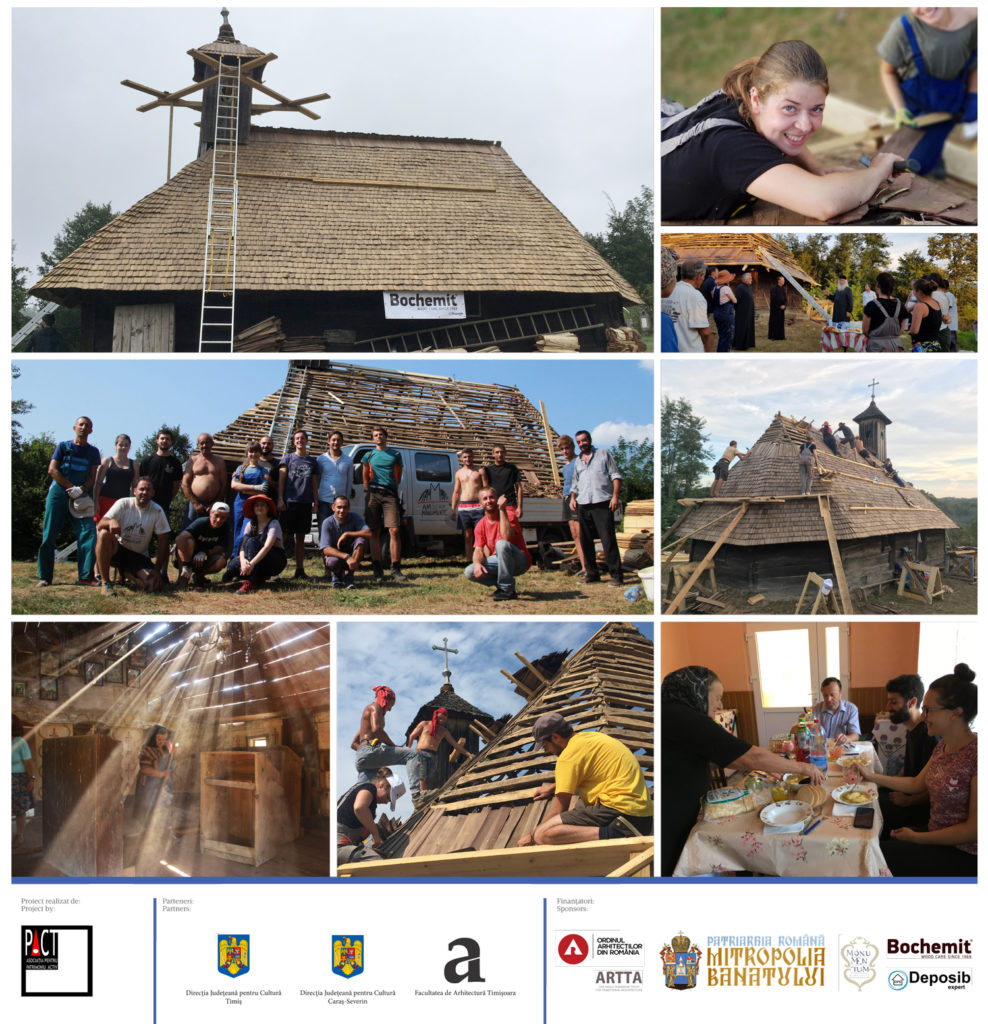
GENERAL PRESENTATION
The local tradition and some stylistic arguments point towards a dating of the church sometime in the second half of the 17th c. or in the first half of
the following one. The building is simple – a single rectangular space for the naos, with a polygonal apse to the east and a narthex to the west. A short
bell-tower was built above the narthex probably in the 19th c. Along its existence, the church was repeatedly deteriorated, which is probably why the
interior painting is completely lost.
THE STATE BEFORE THE INTERVENTION
As the wood shingle cover degraded in the past decades, the rain waters affected both the roof structure and the interior of the church. The locals
covered it with a canvas meant to offer temporary protection, conversely this favoured even more the fungi and the xylophagous attacks of the wooden
structure.
SAFETY INTERVENTION PROPOSAL
As a response to the conservation state we proposed the urgent documentation, removal and replacement of the degraded wood elements of the framing
(traditionally named “lați”, lath), and the setting of a new wood shingle covering.
ACCOMPLISHED INTERVENTIONS
After the existing covering was documented, the degraded laths were replaced, while preserving as much as possible from the existing material.
The new wood shingle cover was first submerged in a copper sulphate solution (to help against bad weather and biological attacks), then dried and
afterwards it was assembled on the roof. The wood treatment solution was provided by Bochemit (producer) and Deposib Expert from Sibiu (dealer).
The intervention was coordinated by Active Patrimony Association (PACT) from Timișoara and co-financed by the Romanian Order of Architects,
Metropolitanate of Banat, Jupâneşti Parish and the City Hall of Făget.
Dragomirești, Wooden Church
GENERAL PRESENTATION The wooden church in Dragomirești is one of the oldest and most valuable in Banat, although both the year of its construction and the one of its bringing into the village is still shrouded in mystery. The church dates back to the 17th-18th centuries. The painting, one of the most valuable in […]
Veronica

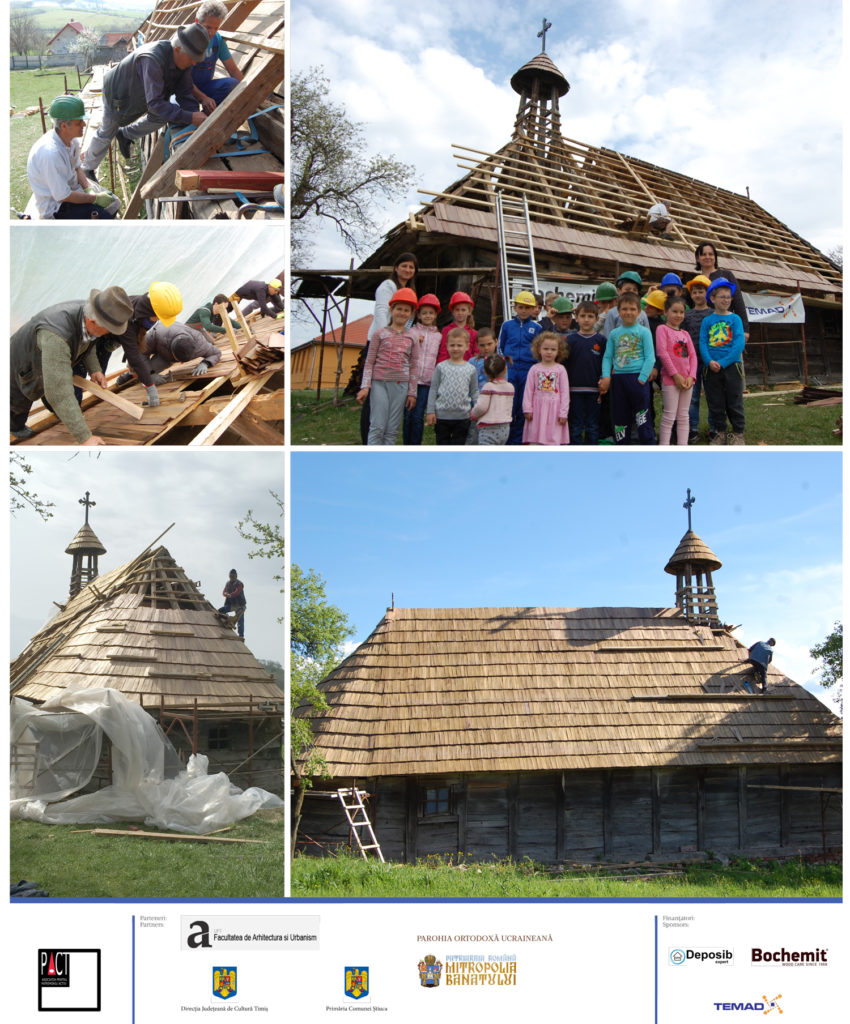
GENERAL PRESENTATION
The wooden church in Dragomirești is one of the oldest and most valuable in Banat, although both the year of its construction and the one of its bringing
into the village is still shrouded in mystery. The church dates back to the 17th-18th centuries. The painting, one of the most valuable in Banat, is made
by the painters Savu Zabar and Groza Barzav who were to paint and sign the royal doors of this church in 1774. If we accept the local tradition that the
church was originally built in the village of Zorlenţu Mare and then, sometime in the 18th century, moved to Dragomirești, in the absence of traces
indicating that the church was moved after the painted decoration, it must have been moved before the church’s inscriptions dating from current
location (Dragomireşti). Considering that a conscription dating back to 1755 records a relatively new wooden church in Zorlenţul Mare, from 1737, it can
be assumed that in Dragomireşti was actually sold an older wooden church of the Zorlenţa Mare community.
THE STATE BEFORE THE INTERVENTION
The shingle cover of the church and the small tower above the pronaos were in an advanced stage of degradation, endangering the conservation status
of the monument and its painted décor. The pluvial water infiltrated the church during the time and affected the narthex ceiling, the vault of the nave
and the apse of the altar.
ACCOMPLISHED INTERVENTIONS
The emergency interventation has replaced the very degraded cover with a new shingle roof. The new shingle has the same wood essence and size. It
was done in 3 layers, with the nail apparent. The old coating was in two layers, but it was decided to add an extra layer to increase its resistance over
time. The shingle was previously treated with a substance with fungicidal and insecticidal properties.
